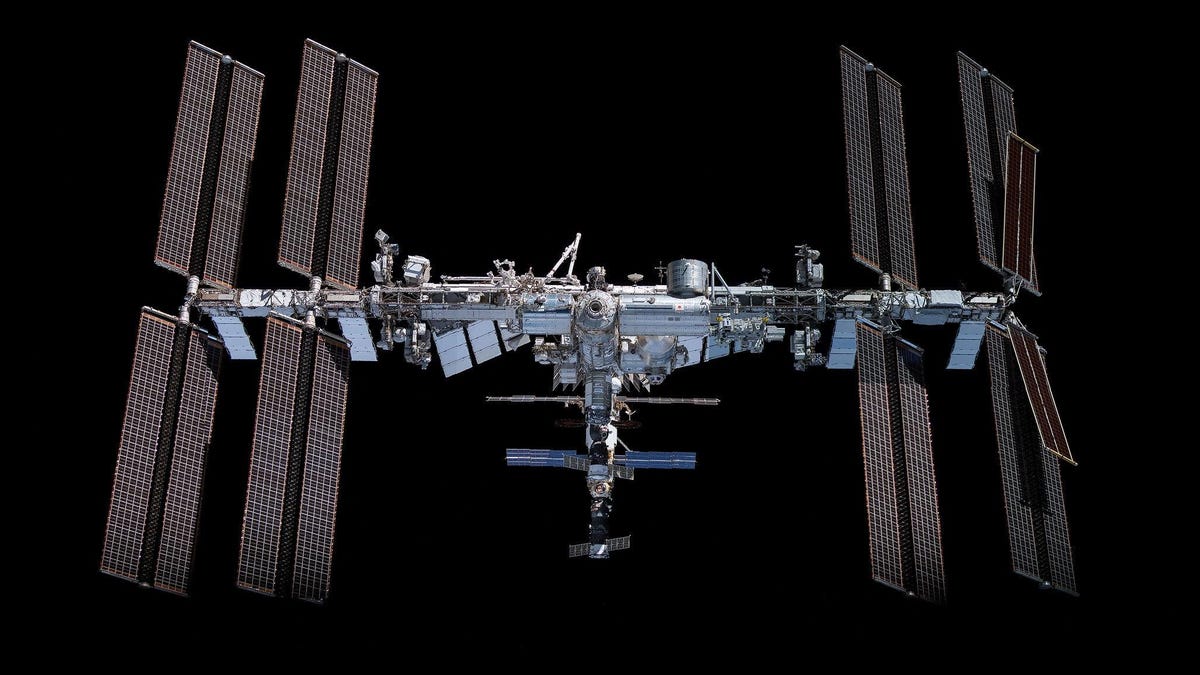
The International Space Station (ISS) has been orbiting Earth for 24 years, hosting crews of astronauts and running experiments in the microgravity environment. By 2030, however, the space station’s reign in low Earth orbit must come to an end and NASA is figuring out exactly how to do that.
NASA put out a request for proposals for private space companies in the U.S. to come up with a design for a spacecraft to safely deorbit the ISS as part of its retirement plan, the space agency announced on Wednesday.
Advertisement
The ISS will remain operational until 2030. After which, the space station has to be deorbited in a safe manner to prevent the lab from falling onto populated areas. To do that, NASA is suggesting a “new spacecraft design or modification to an existing spacecraft that must function on its first flight and have sufficient redundancy and anomaly recovery capability to continue the critical deorbit burn,” the space agency wrote.
In other words, NASA is requesting a design for either a new spacecraft or tweaks to an existing one that must operate successfully during its initial mission and possess the necessary backup systems and error-correcting capabilities to carry out the deorbit maneuver. The spacecraft will likely be designed to serve as an orbital transfer vehicle, essentially acting as a “space tug.” Its primary function would be to lower the space station’s orbit, allowing the ISS to reenter and disintegrate in Earth’s atmosphere. Ideally, remnants of the space station would descend into the Pacific Ocean.
Advertisement
Advertisement
NASA had previously suggested using Russia’s Progress cargo spacecraft to deorbit the ISS. It’s not clear whether that is still a viable option. In March, NASA released its 2024 budget proposal, which included $180 million for developing a deorbit capability for the ISS by the end of 2030.
At the time, NASA officials said that the current ISS deorbiting model still involves the Russian spacecraft. “But we are also developing this U.S. capability as a way to have redundancy and be able to better aid the targeting of the vehicle and the safe return of the vehicle,” Kathy Lueders, associate administrator for NASA Space Operations, told Gizmodo during a call on March 13.
The U.S. Deorbit Vehicle will take years to develop, test and certify, NASA wrote in Wednesday’s statement.
Following the ISS’ retirement, NASA plans on maintaining a presence in low Earth orbit via a commercial model that serves both public and private interests. In December 2021, NASA awarded contracts to Blue Origin, Nanoracks, and Northrop Grumman to develop space station designs that will succeed the ISS.
Advertisement
For more spaceflight in your life, follow us on X (formerly Twitter) and bookmark Gizmodo’s dedicated Spaceflight page.
Services Marketplace – Listings, Bookings & Reviews